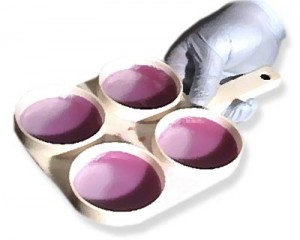In honor of Earth Day this past month, I thought it would be fitting to focus my final civic issues post on this national holiday.
Earth Day, which is celebrated every April 22, originated from an environmental issues awareness movement in 1970. After the 1969 oil spill in Santa Barbara, California and a student anti-war movement, a United States Senator from Wisconsin by the name of Gaylord Nelson was inspired to start a “national teach-in on the environment.” His vision resulted in a demonstration of approximately twenty million Americans, promoting the health of the environment and working toward a more sustainable planet.
The first Earth Day was a huge success, not only because it created more awareness for environmental issues, but also because it resulted in the creation of the Environmental Protection Agency (a department of the federal government responsible for environmental issues) and the passage of the Clean Air Act, the Clean Water Act, and the Endangered Species Act.
The first international Earth Day was organized in 1990 by Denis Hayes. This Earth Day was much farther-reaching than the first. This time, Earth Day transformed into a global event, involving 141 countries and approximately 200 million people.

This image depicts Denis Hayes, the person responsible for organizing the first international Earth Day in 1990.
This year’s Earth Day campaign is entitled “Green Cities.” The primary focus of this campaign is to promote renewable energy practices in an effort to reduce global climate change.
There are many ways that people can become involved in the ideas of the Earth Day campaign. Quite obviously, you could be involved in protests, demonstrations, or other traditional forms of activism to advocate the Earth Day cause. You could also be involved in education by teaching child and adults alike about the importance of a healthy environment and ways to promote the health of the planet. People can make small changes in their daily lives to help protect the environment, such as following the three R’s (reduce, reuse, recycle), planting trees, and the list goes on and on. Individuals can also speak to their local legislators about the importance of environmental protection and suggest ways in which the community can change in order promote a healthy community and a healthy world. People can also become involved in environmental protection on a larger scale by working together with other individuals through service projects, such as cleaning up the Chesapeake Bay.
The Earth Day campaign website also outlines a few ways that interested individuals can become involved. If you would like to become a volunteer for the national campaign, you can complete an application on there website by following this link: http://action.earthday.net/p/salsa/web/common/public/signup?signup_page_KEY=5645. They ask that all volunteers possess a good knowledge of Microsoft Office programs, especially Microsoft Word and Microsoft Excel, and that volunteers are willing to participate in off-site events, answer phone calls, and perform various clerical tasks.
The Earth Day campaign website also includes a section where the campaign accepts donations to fund its various environmental conservation projects. If you are interested in donating to the Earth Day campaign, please follow this link: https://org.salsalabs.com/o/1807/p/salsa/donation/common/public/?donate_page_KEY=7091.
Another way in which you can take part in the Earth Day campaign is by participating in the “A Billion Acts of Green” movement. The Earth Day campaign website describes this movement as “an international movement to protect the planet and secure a sustainable future.” Basically, this movement encourages people to participate in one “act of green.” These “acts of green” must be acts that work to protect the environment; three of these methods are suggested on the movement’s web page. After you complete your “act of green,” submit your name and contact information as well as a description of the act you completed, and the website will keep track of all of the acts. The ultimate goal of the movement is to get at least one billion people worldwide to participate in and document an “act of green” to help make the planet a healthier place to live in. You can find out more about this movement and/or participate by following this link: http://www.earthday.org/takeaction/.
All of the information used to create this blog post was found on the official Earth Day website: http://www.earthday.org/.






